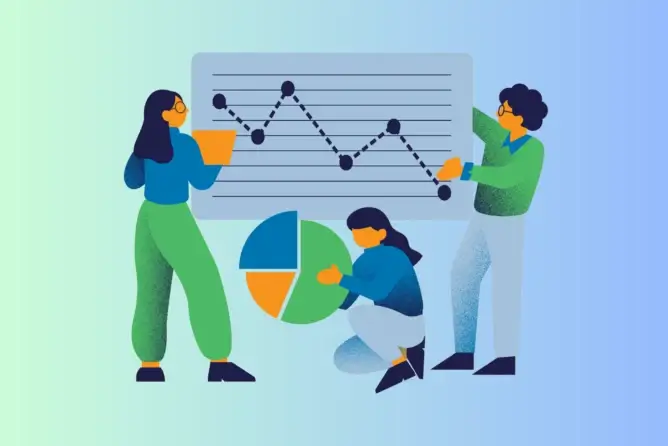How Customer Communication Drives Growth in Retail Affiliate Programs

In this article
Why Customer Communication Matters in Retail Affiliate Programs
Effective Customer Communication in Affiliate Programs. Key Channels
Examples of Brands Scaling with Customer Communication
Tools to Power Scalable Customer Communication
Metrics that Show the Impact
Conclusion
Affiliate programs have become one of the top growth tools for eCommerce and retail brands. And it’s easy to see why. By teaming up with external promoters (affiliates), businesses can reach new audiences and only pay when real results happen.
It’s a cost-effective and scalable way to attract new customers. But getting traffic to your site is just the start.
Even the most well-planned affiliate strategy can fall flat if there’s no clear plan for how you communicate with your customers once they arrive.
Because what happens after the click matters just as much as the click itself.
- Are new customers feeling welcomed and supported?
- Are they sticking around?
- Are they inspired to share their experience?
In this post, we’ll break down how thoughtful, well-timed customer communication can boost conversions, build loyalty, and help you grow your retail affiliate program in a way that lasts.
Why Customer Communication Matters in Retail Affiliate Programs
Affiliate programs are designed to attract new customers through trusted partners. When someone lands on your site via an affiliate link, they’re arriving with a certain level of trust already established. But without a solid communication strategy in place, that trust and the opportunity it brings can quickly fade.
Once the affiliate partner has done their part by driving traffic, it’s up to the brand to deliver an experience that converts that interest into action — and ideally, into long-term loyalty.
Acquiring customers through affiliate channels requires more than a good landing page. It calls for an immediate, personalized response to keep the momentum going and increase the chances of conversion. This can include:
- A welcome email that feels warm and relevant
- A timely SMS with a special offer
- Live chat access to answer questions and reduce hesitation
After that first interaction, the goal shifts from conversion to retention. Building loyalty involves:
- Encouraging repeat purchases
- Introducing referral opportunities
- Inspiring positive reviews and user-generated content
Without clear and consistent communication throughout this journey, the affiliate experience starts to break down. Partners lose motivation, and brands miss out on potential revenue.
In short, a successful affiliate program doesn’t stop at traffic — it thrives on connection. And that connection is built through thoughtful, well-timed communication at every stage.
Effective Customer Communication in Affiliate Programs. Key Channels
- Email & SMS Marketing
- Chat Widgets and On-site Messaging
- Social Proof & UGC
Email & SMS Marketing
Email and SMS may not be flashy, but they’re still two of the most reliable channels available. They’re the basics, and in affiliate marketing, the basics really matter.
This is where automation becomes your best friend. Think: welcome emails, cart reminders, thank-you notes — all those behind-the-scenes messages that keep things moving. You can even set up email flows just for new affiliates, walking them through how the program works, why it’s worth joining, and how to get started fast.
Here’s how the flow usually works:
- Email gets the ball rolling with automated sequences, such as welcome series, cart recovery emails, and post-purchase thank-you emails. They let you kill two birds with one stone: increase your conversion rates and boost average order values.
- Then SMS comes in as your gentle nudge. Say someone clicks an affiliate link but bounces. SMS with a quick discount or offer can bring them right back.
When you use both together, email and SMS create a powerful combo that keeps your affiliate traffic engaged and more likely to convert. Yes, it’s a simple strategy, but it works like a charm, especially when you’re trying to grow fast without losing the personal touch.
Chat widgets and On-site messaging: Turning Questions Into Conversions
Live chat has long ceased to be just a support tool. It is a powerful channel for converting visitors into buyers, especially those who were brought in by affiliates. This is because when a customer prospect receives an instant answer to a question about a product, its delivery, or warranty, it removes unnecessary barriers for the buyer.
Think about it: someone clicks through, they’re interested, but they’ve got a question. If you can answer it instantly, whether it’s about shipping, sizing, or return policies, that hesitation disappears. And suddenly, they’re ready to buy.
Here’s how brands are using chat more strategically:
- Live chat gives visitors a way to connect the second they land. No waiting, no guessing — just answers when they need them most.
- Chatbots can jump in based on behavior, offering help, recommending products, or even nudging users toward a deal.
- CRM integration makes it easy to track where users came from — including affiliate links — so you get a full picture of what’s working.
But the magic isn’t just in having a chat box on your site. It’s about weaving it into your overall customer experience so that it supports affiliate-driven traffic without adding extra pressure to your support team.
One great example? Clerk Chat. It offers automated, personalized messaging that feels human, and helps move users smoothly from curiosity to checkout. With tools like these, brands can maintain the affiliate journey after the click, ensuring seamless, scalable, and smarter communication.
The result? Higher trust, faster decisions, and more conversions.
Social Proof & UGC: Real People, Real Influence
Buyers are more likely to trust other buyers than paid ads. That’s why social proof is such a powerful mechanism for interaction. It strengthens trust in affiliate partners.
That’s why user-generated content (UGC) and social proof are so powerful for affiliate programs. When someone sees a real person unboxing a product or leaving a rave review, it instantly feels more credible. And it makes the affiliate recommendation hit harder.
Want to boost conversions from affiliate traffic? Make sure your landing pages include:
- Real customer photos or videos using the product
- Reviews, testimonials, and product ratings
- Social posts with branded hashtags or shoutouts
Some brands are taking it even further by building community spaces where customers naturally share their experiences. This creates a self-sustaining loop:
Referral → Purchase → UGC → New Referral
You can even reuse UGC in your email campaigns or chat widgets to make a subtle nudge that helps move undecided shoppers closer to a “yes.”
When you tap into real stories, affiliate marketing stops feeling transactional and starts feeling personal. And that’s exactly what builds long-term trust (and loyalty).
Examples of Brands Scaling with Customer Communication
Need some specific showcases to see how effective communication can lead to impressive results?
Ok, let’s check them!
Glossier
The Challenge
The brand was already generating a significant amount of traffic through affiliates and referrals. However, without strong, ongoing communication, much of that potential was slipping through the cracks.
The Move
So, they flipped the script and launched the Generation Glossier program—a blend of affiliate marketing and community vibes. Instead of just giving people a link and calling it a day, they invited real customers to get involved.
Here’s what participants got:
- Free products (aka product seeding, always a win)
- Early access to new launches
- The chance to create content for the brand
- A direct line to give feedback and shape what’s next
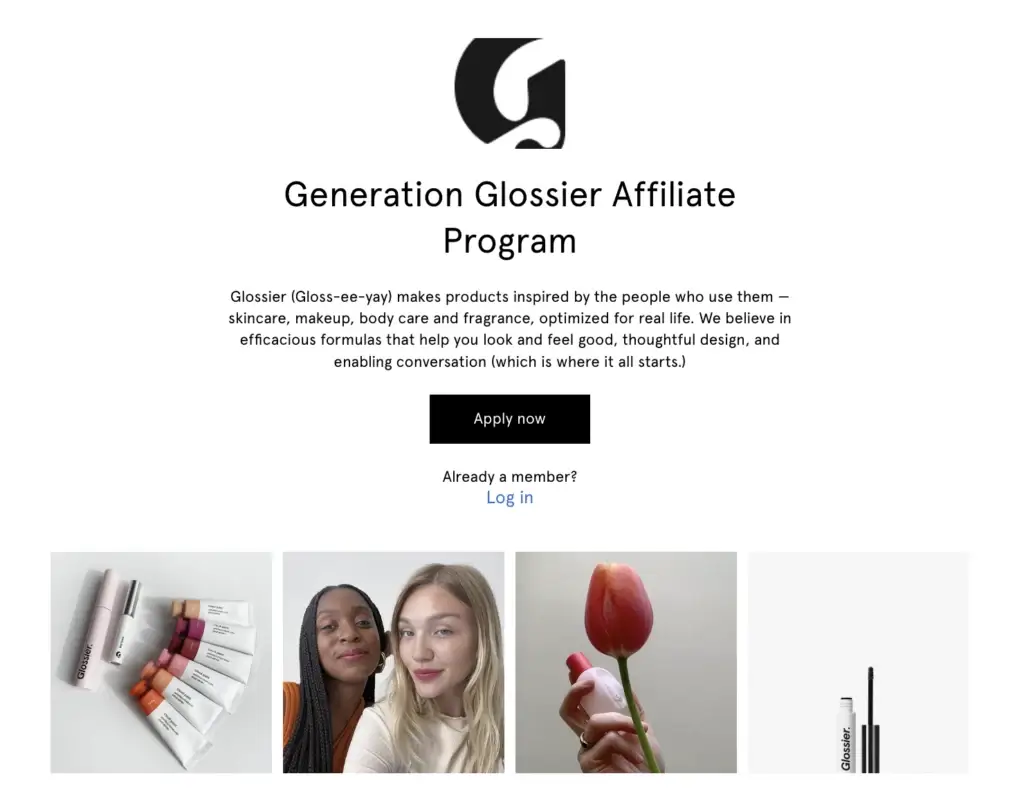
The brand successfully integrated UGC into email and social media. In particular, users shared their real experiences (hashtags #GlossierPink, Instagram Stories), making them a perfect social proof.
Results
As mentioned in publications by Glossy.co and Business Insider, approximately 65-70% of the brand’s online sales come through peer-to-peer referrals and affiliate communities.
Allbirds
The Challenge
Allbirds was seeing strong traction through affiliate channels, but there was a catch — many customers weren’t coming back after their first purchase. The brand needed a way to keep new buyers engaged and build longer-term loyalty.
The Solution
Allbirds launched a friendly, highly personalized welcome series comprising a 3–4 email series that greeted new customers, shared helpful tips, and featured stories from real, happy buyers.
One standout detail? Each email included a charming animated sheep packing up shoes, a small, fun touch that made the brand feel warmer and more memorable.
They didn’t stop there. Allbirds also added personalized SMS messages that included mini-surveys, allowing them to learn more about customers and keep the conversation going beyond the inbox.
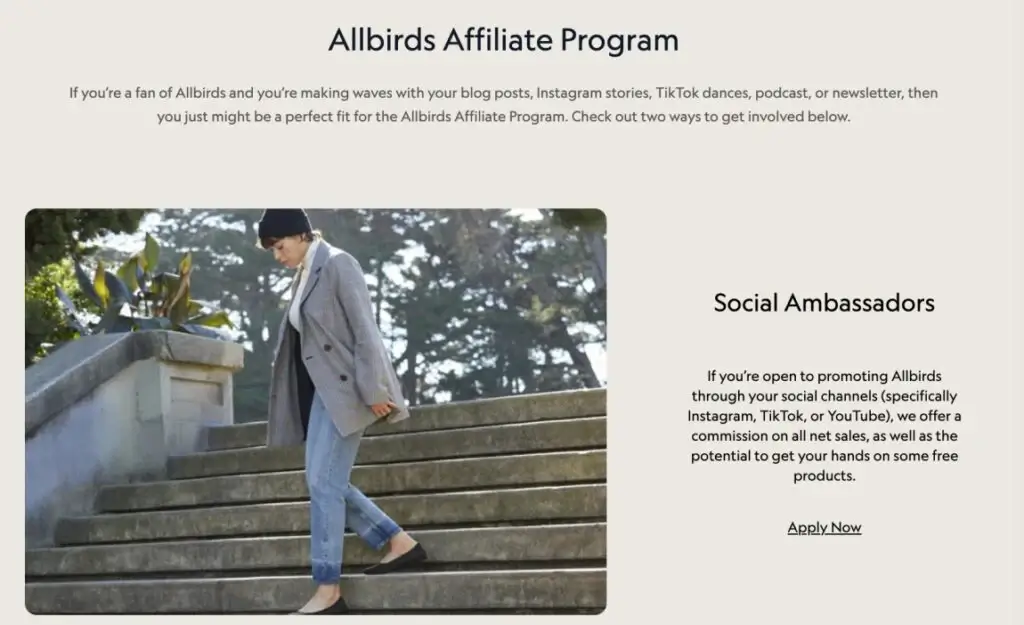
Results
This approach paid off fast:
- Open and click-through rates went up
- Repeat visits from affiliate-driven traffic increased
- Cart abandonment emails + transactional messages helped turn more visits into purchases
- Overall customer engagement grew
The Takeaways
The Glossier and Allbirds examples highlight a key truth: getting traffic through affiliate links is just the starting point. What truly drives results is how brands continue the conversation once a customer arrives.
Welcome emails, personalized SMS messages, community engagement, and real customer content all play a role in turning interest into action. These tools help create a consistent, memorable experience that builds trust and encourages repeat purchases.
When brands focus on meaningful communication from the very first interaction, affiliate programs evolve into something more powerful. They become a channel for connection, loyalty, and long-term growth.
Tools to Power Scalable Customer Communication
Scaling a retail affiliate program also depends on having the right tools to support personalized, well-timed communication.
At the middle-of-funnel (MOFU) stage, users are already familiar with your brand but haven’t taken the next step. This is a crucial moment to engage them through relevant messaging on the right channels.
To put affiliate communication strategies into action, brands need technology that helps automate workflows, segment audiences, and adapt messaging based on user behavior. With the right tools, it’s easier to deliver consistent communication that supports conversions and builds stronger customer relationships.
Clerk Chat
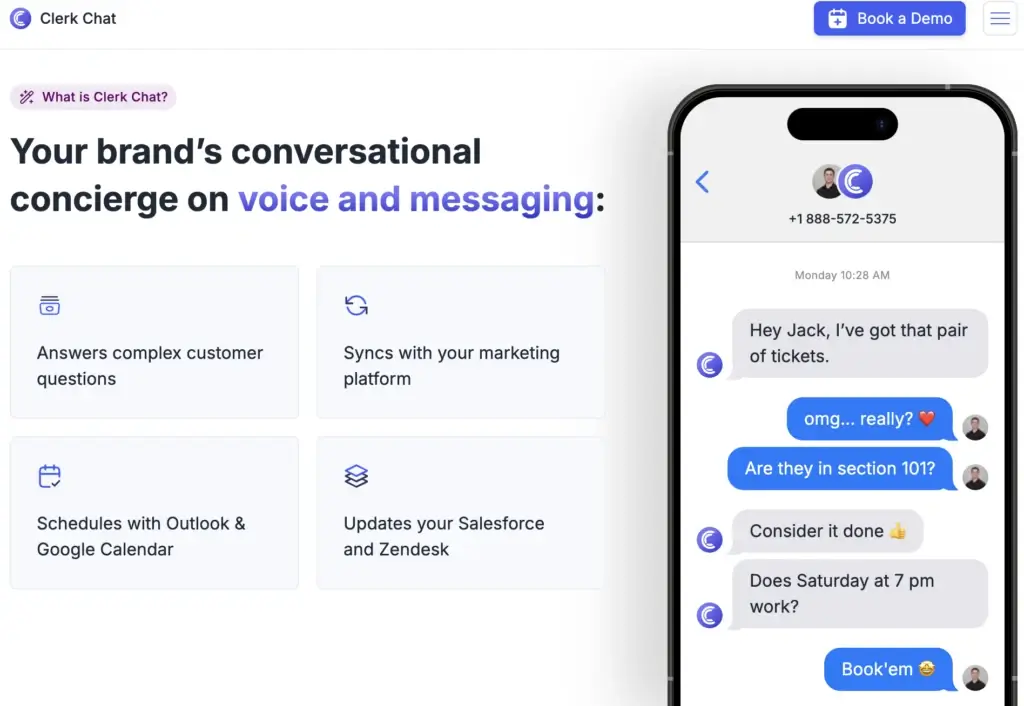
This powerful platform for automated two-way communication via SMS, WhatsApp, iMessage, and other channels combines live chat, chatbots, and CRM integrations into a single system. It is especially useful for affiliate marketing in retail, where it is important to:
- Quickly process inquiries from referral traffic,
- Segment users by source (affiliate ID, UTM),
- Send personalized follow-up messages to encourage repeat purchases.
Clerk Chat enables you to implement intelligent communication tailored to the nature of the user’s interaction with the brand. This makes it effective for improving customer communication in retail.
HubSpot, Salesforce. CRM systems with affiliate-focused analytics
These platforms allow you to do the following.
- Automatically record the source of traffic associated with affiliates.
- Build attribution models to evaluate partner performance.
- Integrate communication with email/SMS scripts, creating a unified customer journey.
For medium and large retailers, such CRMs become the basis for analytics and decision-making.
Klaviyo, Mailchimp, Emarsys. Email/SMS automation
These platforms provide the following:
- They create personalized trigger chains. These include Welcome Series, Post-Purchase, and Re-engagement.
- They integrate with Shopify/WooCommerce/BigCommerce for dynamic content. This can include automatic product blocks, personalized offers, and more.
Scenarios are differentiated for “regular” and affiliate traffic. That is, according to user behavior.
In the MOFU segment, such letters can remind users of unfinished orders, recommend related products, or enable social proof elements.
Yotpo, Bazaarvoice. UGC aggregators
User-generated content is a critical tool for building trust among potential customers attracted through partners. With these services, you can do the next.
- Automatically request reviews after purchase.
- Show content from other affiliate customers in a relevant environment.
- Use UGC in remarketing. In particular, in push notifications or retargeting emails.
These are especially effective in affiliate marketing for retail businesses, where conversion is closely linked to trust levels.
OneSignal, PushEngage. Web push services
For affiliate users who have not completed a purchase or have not left an email, web push is a chance to bring them back. Namely,
- With reminders about abandoned carts,
- Through limited-time promotions,
- With UGC-based “What other users are saying” content.
These tools have a high ROI thanks to:
- Low launch costs,
- Quick setup.
Triple Whale, Segmetrics. Multi-channel tracking tools
It is impossible to evaluate the effectiveness of communication within an affiliate program without in-depth tracking. What exactly do we mean?
Triple Whale allows you to see:
- How much does each affiliate bring in?
- Which communication channel has the highest conversion rate (SMS vs. email vs. push)?
Segmetrics is useful for:
- Studying the entire customer journey,
- Linking customer behavior to LTV, AOV, and other metrics.
Brands that already have a basic affiliate structure should invest in integrating analytics with multichannel communication.
It allows them to see which communication actions:
- Change user behavior
- Convert initial affiliate traffic into a sustainable, loyal audience
Metrics that Show the Impact
If you’re using customer communication to scale your retail affiliate program, the next step is making sure it’s actually working. That’s where tracking the right metrics comes in.
Here are a few key ones to focus on:
1. Affiliate-attributed Conversion Rate
This shows how well affiliate traffic is converting into paying customers, especially before and after you launch a communication strategy. If your emails, SMS, or chat messages are doing their job, this number should rise.
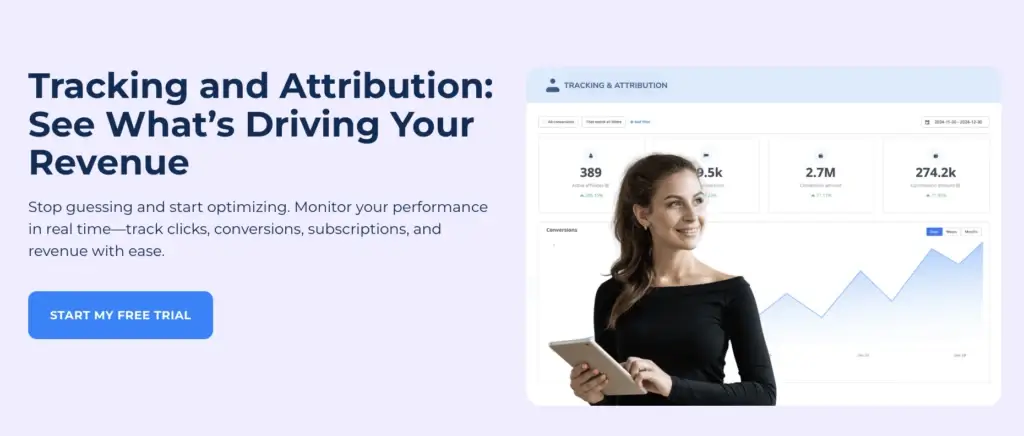
Affiliate tracking platforms like Tapfiliate make it easy to track exactly where your conversions are coming from, including which affiliates are driving the most engaged and high-value customers.
With built-in analytics, you can monitor affiliate performance in real time and see how communication efforts (like email flows or loyalty messaging) are influencing actual results. The platform also integrates with your marketing tools, so you can connect referral data with email, SMS, or CRM activity to get the full picture.
Whether you’re optimizing a campaign or scaling your entire affiliate program, Tapfiliate gives you the insights to move with confidence and make smarter decisions faster.
2. Customer Lifetime Value (CLV) from the Affiliate Channel
CLV tells you how much revenue affiliate-referred customers are bringing in over time. A strong communication plan often boosts this by encouraging repeat purchases and better long-term engagement.
3. Engagement Across Communication Channels
This includes metrics like:
- Email open rates
- SMS click-throughs
- Live chat replies
- Reactions or interactions with push notifications
These numbers provide insight into whether your messages are being received, resonating, and prompting action.
Tracking these KPIs consistently helps you see what’s working, what needs tweaking, and how your customer communication efforts are impacting affiliate performance over time.
4. Repeat purchase rate (Affiliate Channel)
The percentage of affiliate-referred customers who return to make another purchase.
Why it matters:
This metric helps you understand how well your follow-up communication is working. It indicates whether customers acquired through affiliates are becoming repeat buyers, and this is an important indicator of long-term value.
Example:
If 1,000 customers make their first purchase through affiliate links in May, and 220 of them make another purchase by July, your repeat purchase rate is 22%. That’s a strong indicator that your messaging—like post-purchase emails, loyalty offers, or personalized recommendations—is doing its job.
What to aim for:
- 15–20% repeat rate: needs improvement
- 20–30%: performing well
- 30%+: strong loyalty, high engagement
How to improve it:
Send product recommendations, early access to promos, or personalized follow-ups within two weeks of the first purchase. Timing and relevance make a big difference.
5. Referral rate
When a customer comes in through an affiliate and then refers someone else, that’s a clear win. This metric shows how much trust and satisfaction you’ve earned from affiliate-driven buyers.
For example, if 500 customers arrive via affiliates and 80 of them go on to refer a friend, that’s a solid sign your product experience is resonating. It’s also a great reason to consider layering in a post-purchase referral flow—something as simple as a “Share with a friend, get 10% off” message can help increase this number.
This kind of behavior is gold: it means your clients are not only happy but also willing to become part of your growth engine.
6. TTFP (Time-to-First Purchase)
How long does it take for someone to purchase after clicking an affiliate link? That’s what this measures. The faster that purchase happens, the healthier your funnel is.
Let’s say your average user takes 3.5 days to convert. After launching a welcome email flow and adding a live chat prompt to your landing page, the average time drops to 2.2 days. That change tells you your communication is doing its job – clearing up doubts, answering questions, and helping people act faster.
It’s a simple metric, but it gives you deep insight into how well your early touchpoints are working.
7. Opt-In Rate for Communication Channels
After someone arrives via an affiliate, do they want to stay connected? Are they signing up for emails or SMS updates? Are they engaging with your review forms or community prompts?
This is what the opt-in rate tells you. And it says a lot about how well your brand messaging (and your partner’s pitch) align with the experience.
Low opt-in rates could mean the affiliate message promised something your site didn’t quite deliver. High rates? That typically indicates a smooth, consistent journey and a clear value exchange.
Examine what’s working and where people tend to drop off. Even small tweaks to copy, design, or incentive can make a noticeable difference.
8. Post-Communication Conversion Uplift
Sometimes the simplest question is also the most important: Does sending that message make a difference?
Post-communication uplift tells you. It compares conversion rates between users who received at least one email, SMS, or chat message, and those who didn’t hear from you at all.
For instance, customers who receive a welcome email may convert at a rate of 13%, while those who don’t convert at a rate of only 8%. That 5-point lift is clear evidence that your messaging is making a difference.
This metric is particularly useful when running A/B tests or justifying investments in automation tools. It helps you draw a straight line between effort and results.
9. Retention from the Affiliate Channel (90 or 180 Days)
A one-time sale is good. A customer who comes back 90 or 180 days later? That’s where the real value is.
Tracking retention over time, specifically for users who entered through affiliates, shows you whether you’re building long-term relationships or just grabbing short-term wins.
Let’s say 1,000 people buy through affiliate links, and 260 of them come back within three months. That 26% retention rate is a key sign that your onboarding, follow-up messaging, and overall experience are keeping people engaged.
It also contributes to larger KPIs, such as CLV and profitability by channel. If affiliate-sourced buyers stick around longer, they’re worth more, and your affiliate program is doing exactly what it should.
Conclusion
If you want your affiliate program to grow, you can’t ignore customer communication. It’s what keeps new visitors engaged, helps turn first-time buyers into loyal ones, and keeps your brand top of mind.
Tools that enable you to automate messages, personalize the experience, and manage tasks behind the scenes make a huge difference. They help you stay consistent without burning out your team.
Clear communication doesn’t just help your customers. It keeps your affiliate partners happy too, because when things run smoothly, everyone wins — customers convert, partners stay motivated, and your sales start to climb.
In short, if you’re building an affiliate program and want it to succeed, make customer communication a key part of the plan from day one.
Looking for an easy way to track and manage your own affiliate or referral program?








